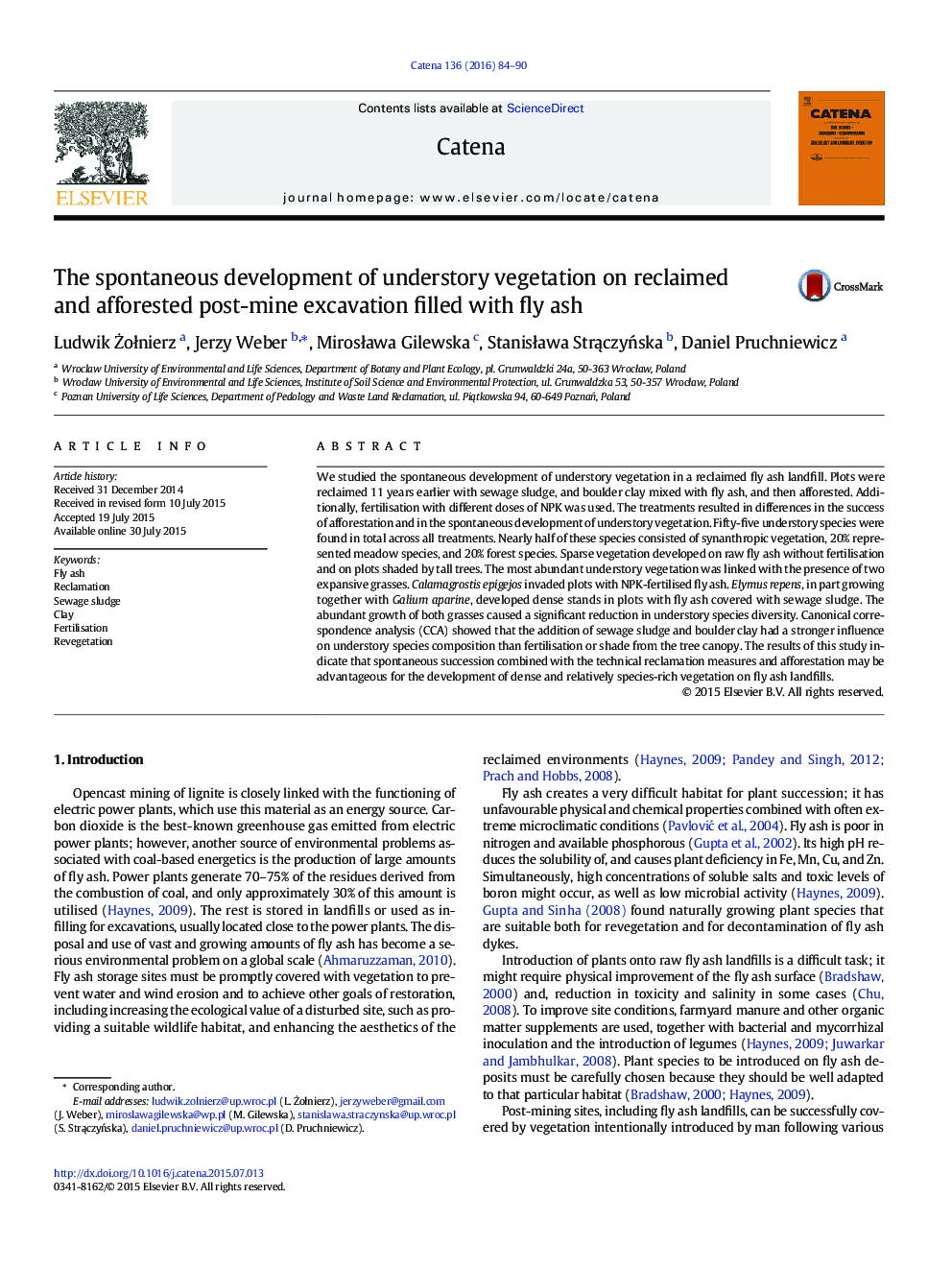| کد مقاله | کد نشریه | سال انتشار | مقاله انگلیسی | نسخه تمام متن |
|---|---|---|---|---|
| 4571001 | 1629216 | 2016 | 7 صفحه PDF | دانلود رایگان |
• The spontaneous development of vegetation on reclaimed fly ash landfill was studied.
• The addition of sewage sludge and clay revealed a vital impact on species composition.
• The effect of fertilisation and shading by the tree canopy appeared to be weaker.
• Two expansive grasses predominated the spontaneous understory vegetation.
• The abundant growth of grasses strongly reduces the diversity of understory species.
We studied the spontaneous development of understory vegetation in a reclaimed fly ash landfill. Plots were reclaimed 11 years earlier with sewage sludge, and boulder clay mixed with fly ash, and then afforested. Additionally, fertilisation with different doses of NPK was used. The treatments resulted in differences in the success of afforestation and in the spontaneous development of understory vegetation. Fifty-five understory species were found in total across all treatments. Nearly half of these species consisted of synanthropic vegetation, 20% represented meadow species, and 20% forest species. Sparse vegetation developed on raw fly ash without fertilisation and on plots shaded by tall trees. The most abundant understory vegetation was linked with the presence of two expansive grasses. Calamagrostis epigejos invaded plots with NPK-fertilised fly ash. Elymus repens, in part growing together with Galium aparine, developed dense stands in plots with fly ash covered with sewage sludge. The abundant growth of both grasses caused a significant reduction in understory species diversity. Canonical correspondence analysis (CCA) showed that the addition of sewage sludge and boulder clay had a stronger influence on understory species composition than fertilisation or shade from the tree canopy. The results of this study indicate that spontaneous succession combined with the technical reclamation measures and afforestation may be advantageous for the development of dense and relatively species-rich vegetation on fly ash landfills.
Journal: CATENA - Volume 136, January 2016, Pages 84–90
